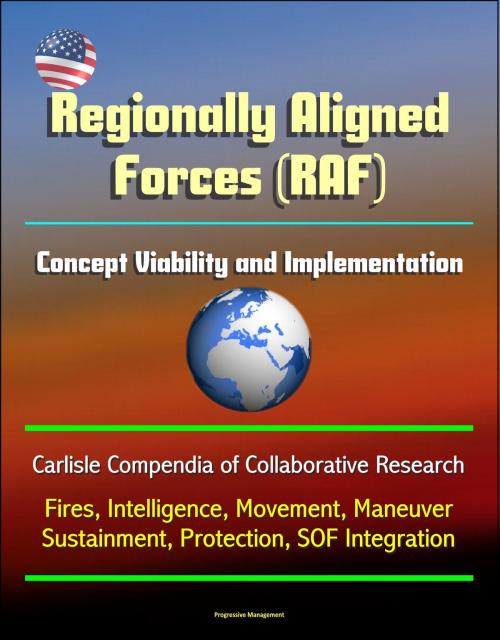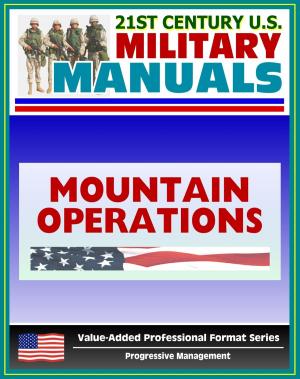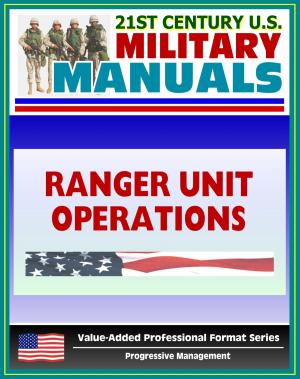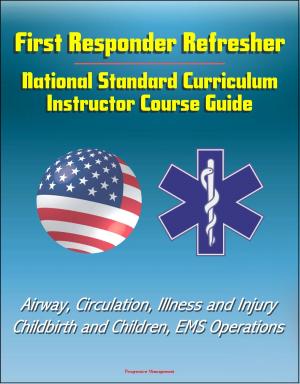Regionally Aligned Forces (RAF): Concept Viability and Implementation - Carlisle Compendia of Collaborative Research - Fires, Intelligence, Movement, Maneuver, Sustainment, Protection, SOF Integration
Nonfiction, History, Military, United States| Author: | Progressive Management | ISBN: | 9781310308789 |
| Publisher: | Progressive Management | Publication: | December 12, 2015 |
| Imprint: | Smashwords Edition | Language: | English |
| Author: | Progressive Management |
| ISBN: | 9781310308789 |
| Publisher: | Progressive Management |
| Publication: | December 12, 2015 |
| Imprint: | Smashwords Edition |
| Language: | English |
Professionally converted for accurate flowing-text e-book format reproduction, this excellent book by the U.S. Army provides an analysis of the Regionally Aligned Forces (RAF) concept.
The Army defines Regionally Aligned Forces (RAF) as: 1) those units assigned or allocated to combatant commands, and 2) those service-retained, combatant command-aligned forces prepared by the Army for regional missions. They are drawn from the total force, including the Active Army, the Army National Guard, and the Army Reserve.3 RAF consist of organizations and capabilities that are forward stationed, operating in a combatant command area of responsibility, and supporting (or ready to support) combatant commands through reach-back capabilities from outside the area of responsibility. Furthermore, RAF conduct operational missions, bilateral and multilateral military exercises, and theater security cooperation activities.4 In theory, the RAF concept provides a scalable, tailorable capability to meet combatant commanders' steady-state and phase zero shaping requirements. Additionally, the RAF concept improves the Army's ability to provide culturally and regionally aware forces for specific missions. As U.S. bases overseas are reduced, the challenge will be to maintain robust regional engagement. The RAF concept is designed to meet this challenge.
Neither the Secretary of Defense nor any combatant commanders have directed the Army to implement RAF. Since 2001, the revised global defense posture and the pursuit of increased cost savings have shifted force basing back to the United States. Increased emphasis on U.S.-based forces could undermine our current global posture. The RAF concept, however, increases the operational tempo of the U.S.-based troops and correspondingly increases annual operating costs. When compared to traditional U.S.-based training activities, RAF is an Army-induced cost that must be addressed when explaining the concept.
The Army's mission, and the justification for force structure, remains to fight and win the nation's wars. The Army force generation (ARFORGEN) model directs Army units to prepare for likely military scenarios as prioritized in the defense strategy. ARFORGEN drives the prioritization of training resources. RAF is the supporting concept that drives force alignment for shaping operations within a theater or region. Shaping operations should be aligned with the prioritization of resources in ARFORGEN and the defense strategy. In a resource-constrained environment the supporting nature of the RAF concept should not be confused with the primary mission. In earlier times, combatant commands were assigned troops to perform the supported mission. Assigned forces conducted shaping operations and performed across the spectrum of conflict, to include theater and regional security cooperation activities. The RAF concept provides forces to a combatant commander without the full expense of forward basing. Regionally Aligned Forces, however, cannot easily prepare for ARFORGEN and RAF missions simultaneously. Opportunity costs among conflicting activities, training opportunities, and missions will occur. The strategic narrative must clearly articulate that RAF support combatant commanders' missions to prepare to fight and win the nation's wars. Current confusion about why the Army is implementing the RAF concept makes it appear that the RAF concept is a self-generated mission designed to ensure relevancy of a U.S.-based Army. The RAF concept is not the supported mission of the Army, nor should it appear to be.
Professionally converted for accurate flowing-text e-book format reproduction, this excellent book by the U.S. Army provides an analysis of the Regionally Aligned Forces (RAF) concept.
The Army defines Regionally Aligned Forces (RAF) as: 1) those units assigned or allocated to combatant commands, and 2) those service-retained, combatant command-aligned forces prepared by the Army for regional missions. They are drawn from the total force, including the Active Army, the Army National Guard, and the Army Reserve.3 RAF consist of organizations and capabilities that are forward stationed, operating in a combatant command area of responsibility, and supporting (or ready to support) combatant commands through reach-back capabilities from outside the area of responsibility. Furthermore, RAF conduct operational missions, bilateral and multilateral military exercises, and theater security cooperation activities.4 In theory, the RAF concept provides a scalable, tailorable capability to meet combatant commanders' steady-state and phase zero shaping requirements. Additionally, the RAF concept improves the Army's ability to provide culturally and regionally aware forces for specific missions. As U.S. bases overseas are reduced, the challenge will be to maintain robust regional engagement. The RAF concept is designed to meet this challenge.
Neither the Secretary of Defense nor any combatant commanders have directed the Army to implement RAF. Since 2001, the revised global defense posture and the pursuit of increased cost savings have shifted force basing back to the United States. Increased emphasis on U.S.-based forces could undermine our current global posture. The RAF concept, however, increases the operational tempo of the U.S.-based troops and correspondingly increases annual operating costs. When compared to traditional U.S.-based training activities, RAF is an Army-induced cost that must be addressed when explaining the concept.
The Army's mission, and the justification for force structure, remains to fight and win the nation's wars. The Army force generation (ARFORGEN) model directs Army units to prepare for likely military scenarios as prioritized in the defense strategy. ARFORGEN drives the prioritization of training resources. RAF is the supporting concept that drives force alignment for shaping operations within a theater or region. Shaping operations should be aligned with the prioritization of resources in ARFORGEN and the defense strategy. In a resource-constrained environment the supporting nature of the RAF concept should not be confused with the primary mission. In earlier times, combatant commands were assigned troops to perform the supported mission. Assigned forces conducted shaping operations and performed across the spectrum of conflict, to include theater and regional security cooperation activities. The RAF concept provides forces to a combatant commander without the full expense of forward basing. Regionally Aligned Forces, however, cannot easily prepare for ARFORGEN and RAF missions simultaneously. Opportunity costs among conflicting activities, training opportunities, and missions will occur. The strategic narrative must clearly articulate that RAF support combatant commanders' missions to prepare to fight and win the nation's wars. Current confusion about why the Army is implementing the RAF concept makes it appear that the RAF concept is a self-generated mission designed to ensure relevancy of a U.S.-based Army. The RAF concept is not the supported mission of the Army, nor should it appear to be.















